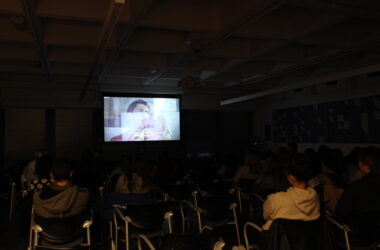Though The Curse was enigmatic and uncomfortable, I really thought that I would enjoy Showtime and A24’s newest television show starring Nathan Fielder, Emma Stone, and Benny Safdie. I have a fondness for Fielder’s previous works, such as Nathan for You and The Rehearsal. I especially enjoy his awkward humour that often makes you want to crawl out of your own skin, especially in his various schemes involving real people. So, part of the appeal of The Curse would be seeing a more serious side to Fielder—I’ve never seen him in anything that attempts to explore serious themes, whatsoever.
The show’s premise is not entirely clear and also incredibly hard to explain, even after watching all ten episodes. What I’ve gathered and have chosen to believe is this: The Curse focuses on Asher Siegal (Fielder) and Whitney Siegal (Stone), a couple who build eco-friendly homes in Espanola, New Mexico, with the goal of “improving” the lives of its mostly Indigenous community members. Most of the show focuses on their filming of a new HGTV-style show titled “Fliplanthropy,” though the title later changes to “Green Queen” because Whitney wants the show to focus more on her. The concept behind this fictional program is much clearer than that of the actual show: The Siegals are building environmentally-conscious, passive homes and are trying to find people to move into them. Basically, they’re actively gentrifying the community while trying to create the opposite impression.
While the final results are not that strong, the one plotline that The Curse successfully pulls off is showing the surface-level impacts of gentrification and how far some are willing to go to achieve it. In episode five, the Siegals’ high-end clothing store experiences high rates of shoplifting. Instead of having the store call the police every time something is stolen, Whitney tells the store manager to charge her credit card, hoping to keep the neighbourhood’s crime rates artificially low in an attempt to entice future home-buyers to the community. Similarly, when trying to justify the gentrification, the Siegals hire a “Native American consultant” to work on their show to avoid their seeming too out of touch.
Overall, the show misses the mark on almost all of the issues it tries to address. The other premise of the show, aside from the couple’s HGTV episode, is the curse that a little girl puts on Asher in the first episode. After pretending to give her money in the parking lot as a photo op for the show, the girl places a “curse” on him. Afterward, Asher becomes superstitious and paranoid. While the plot was most likely supposed to focus on the consequences of gentrification, it later evolves into Asher becoming the stereotypical white saviour of this family. However, like most plotlines on this show, it doesn’t explore either potential aspect of the plot to its fruition. Instead, it cuts the narrative in a way that leaves its viewers confused—especially in regard to whether the curse is real, or if it’s just a joke that the girl decided to pull.
As the season progresses, the show attempts to explore more and more plotlines without tying them all together. While that can work in some cases, the result here is quite messy and disjointed. I expected better from Showtime, A24, and especially Fielder, in terms of both the comedic element and in terms of the quality of the storylines that they could’ve pulled off with a little more effort. If some of these extraneous storylines were scrapped, there could have been more room to explore the issues with gentrification. The show then could have been a fantastic satire condemning home-improvement networks over the concept of “flipping” homes in low-income communities with a slight supernatural twist.








